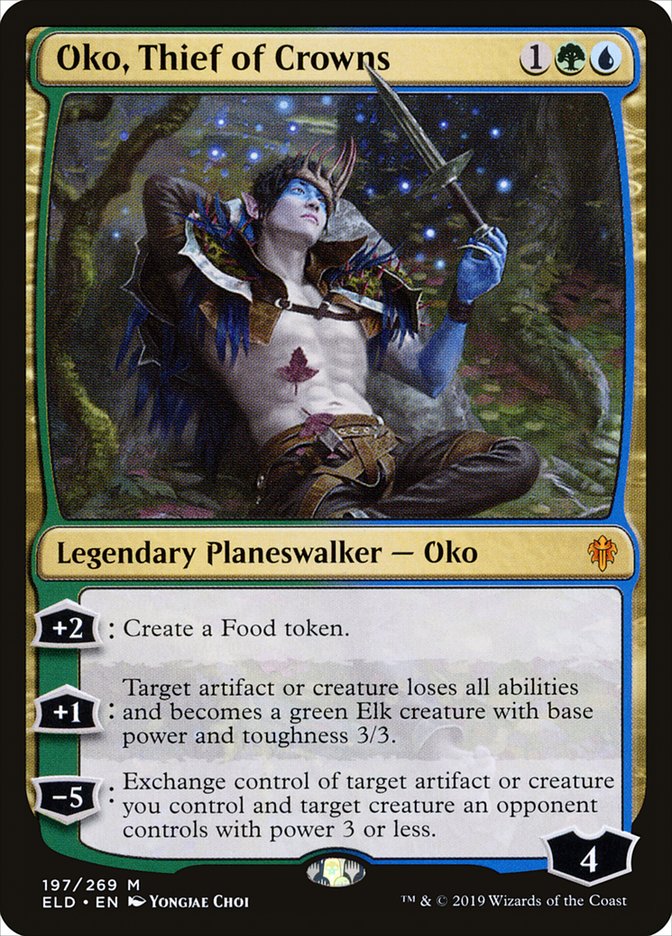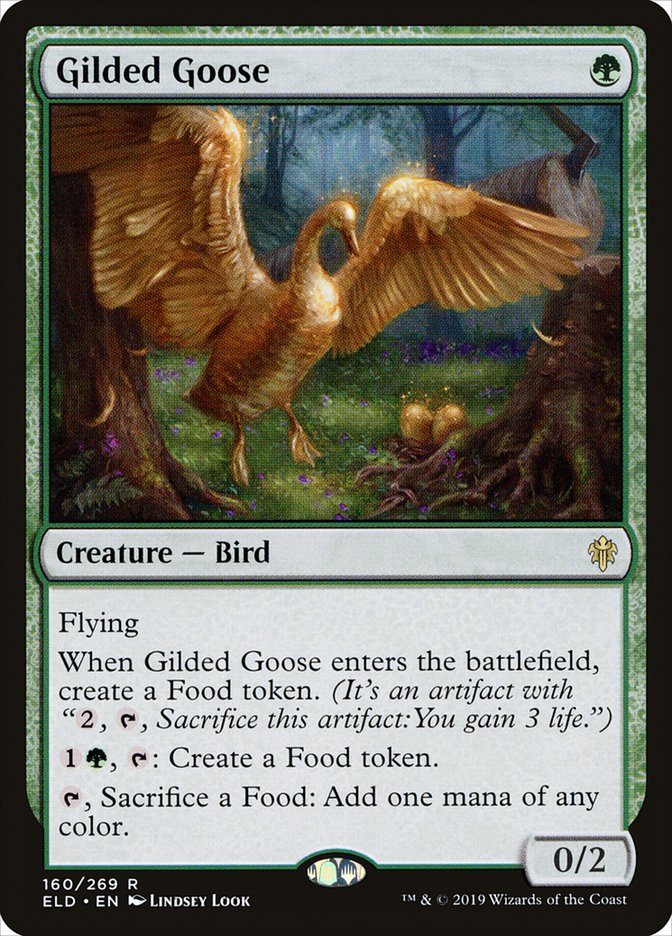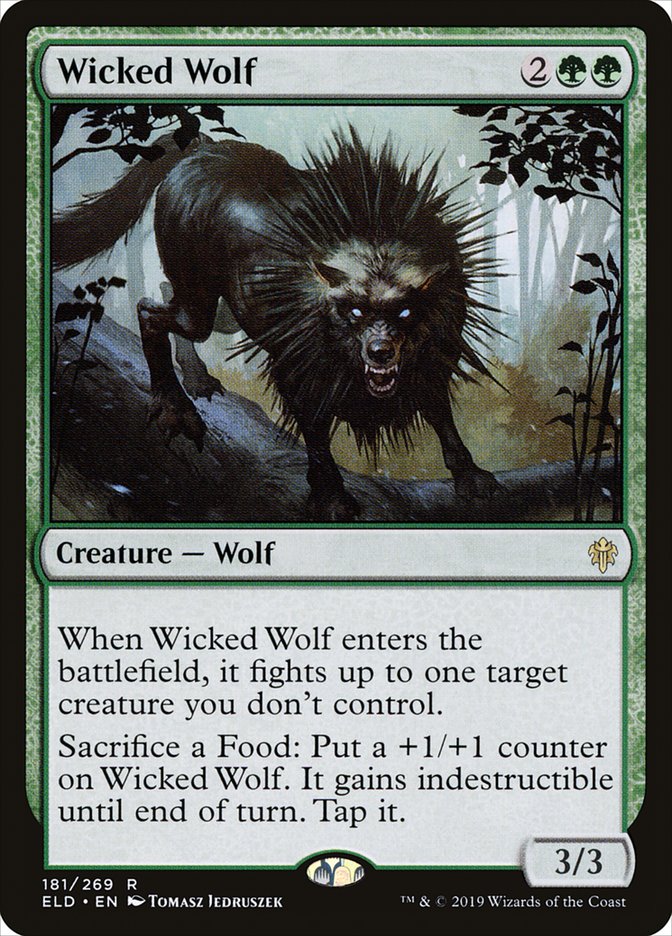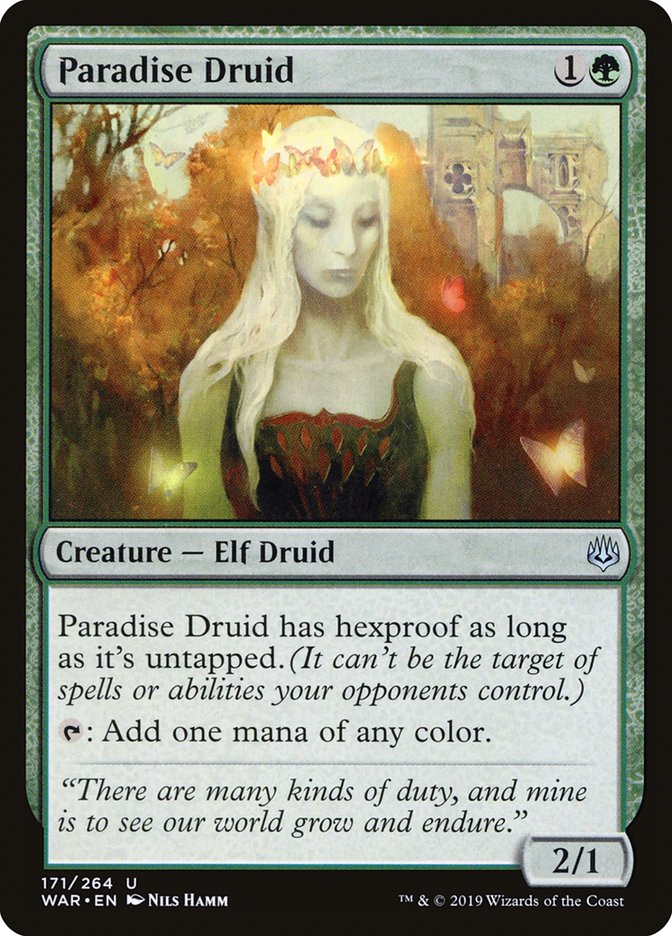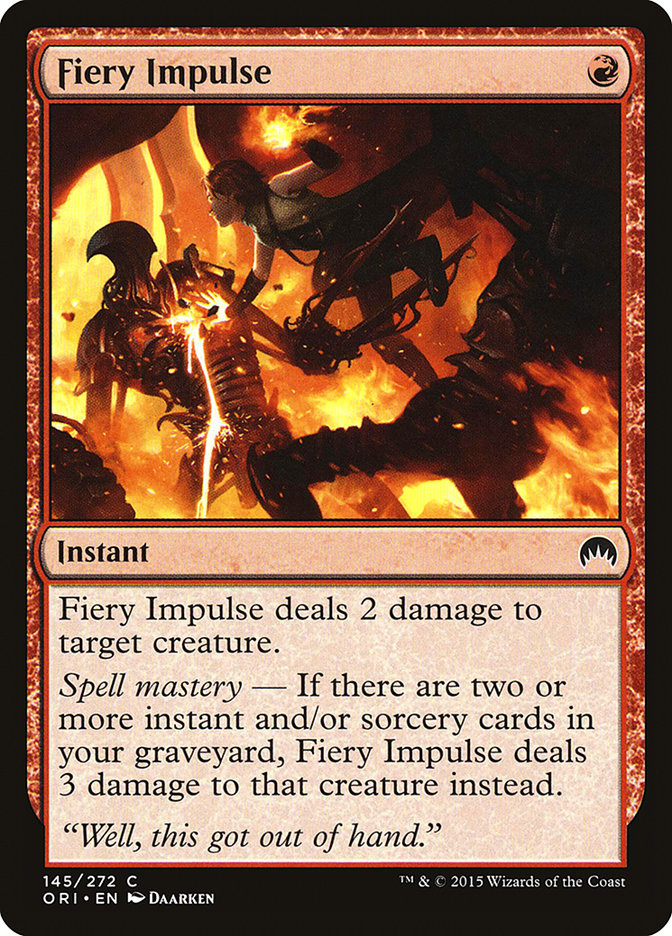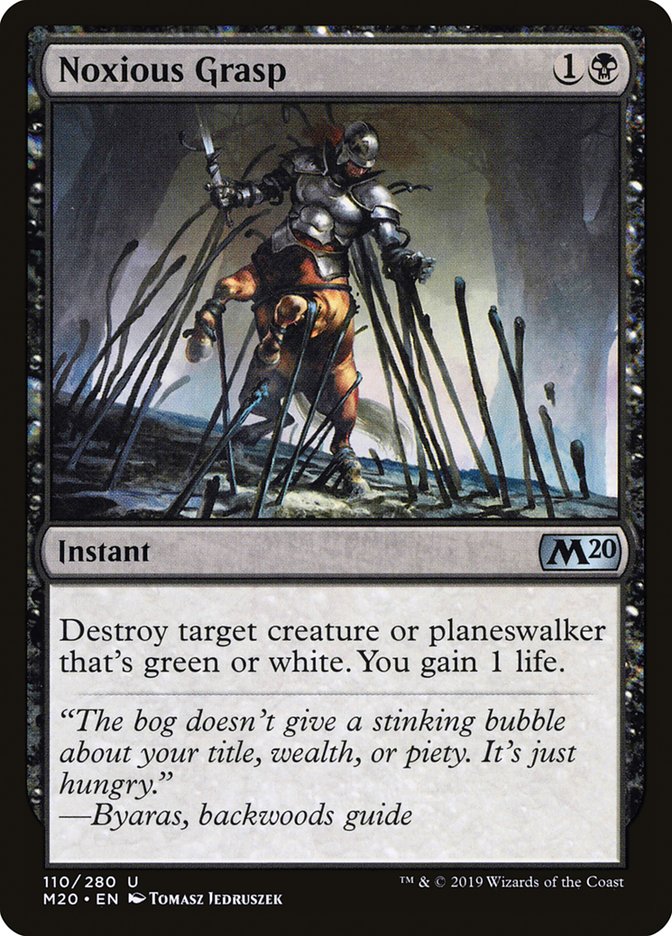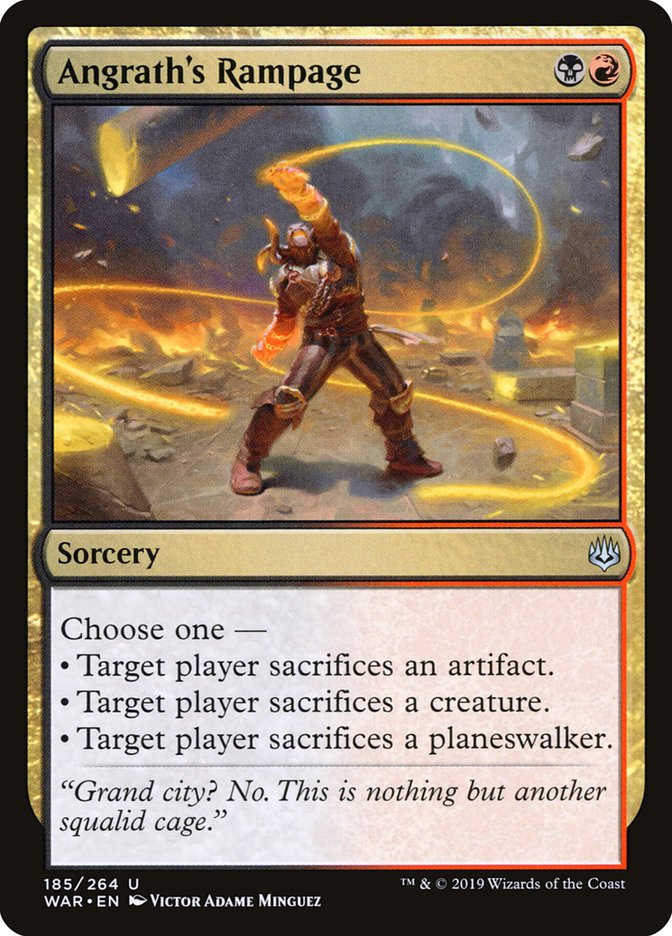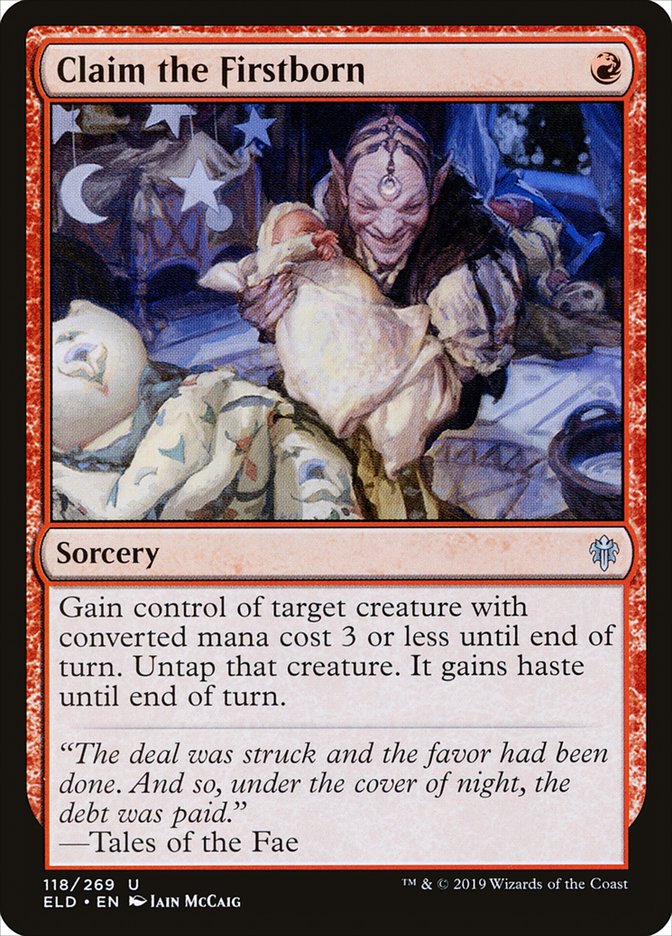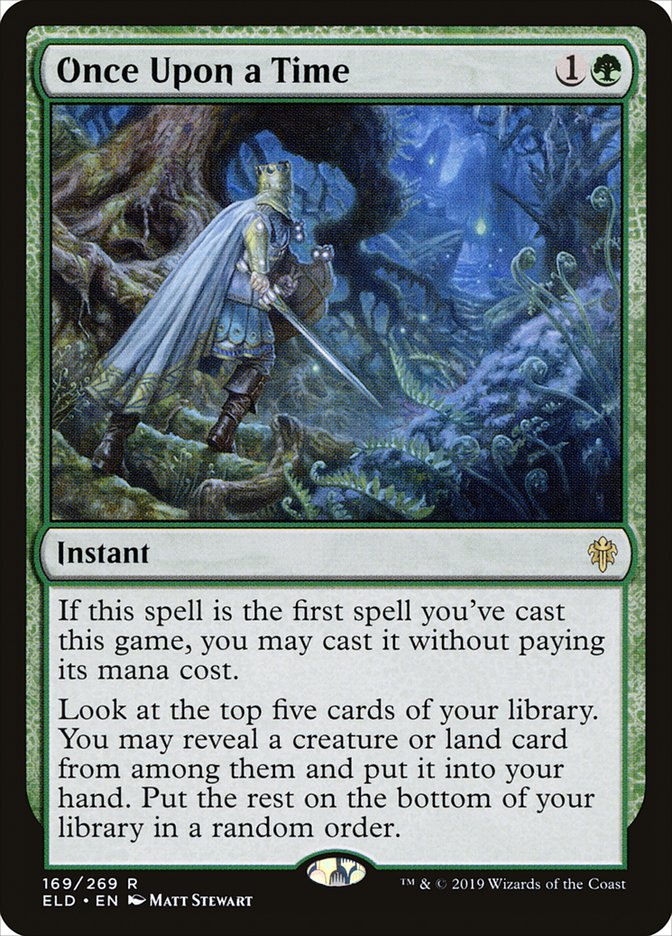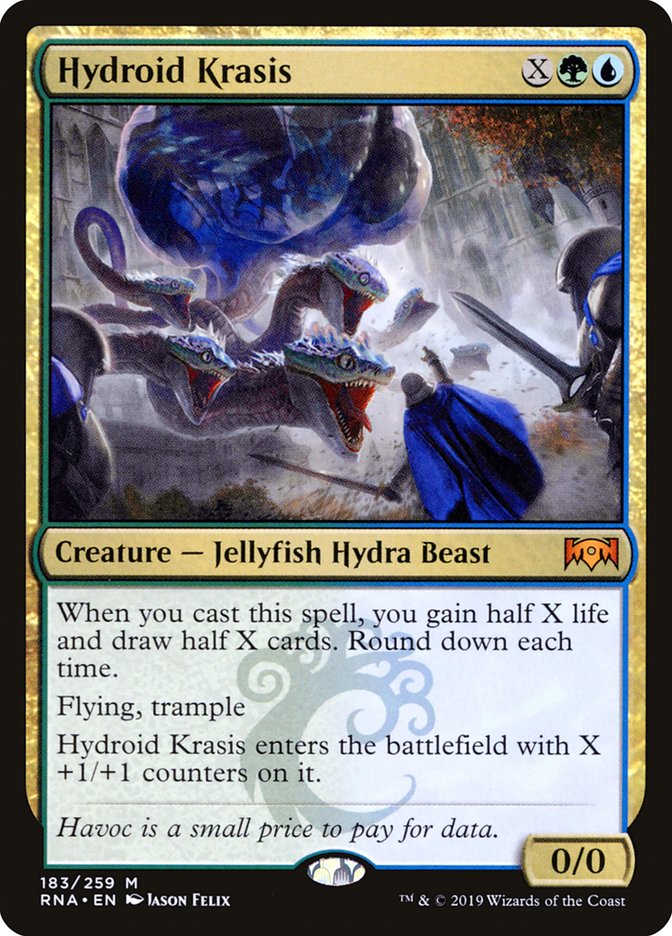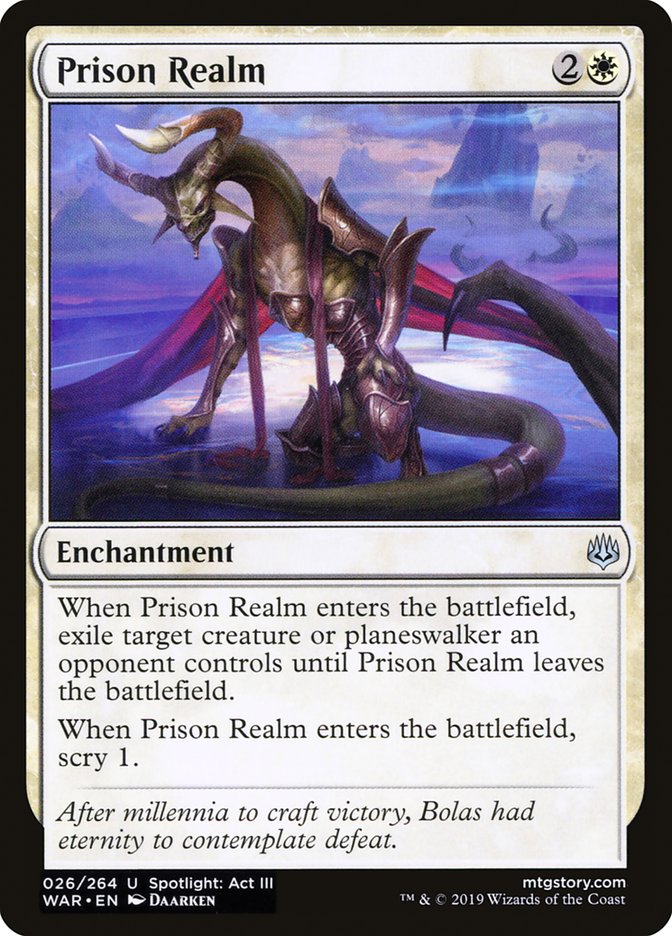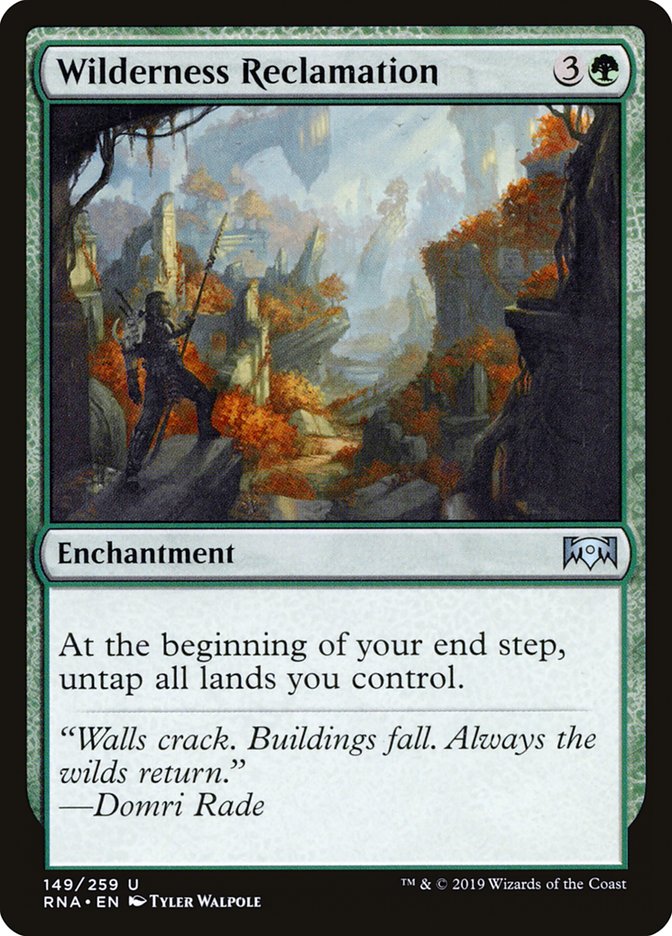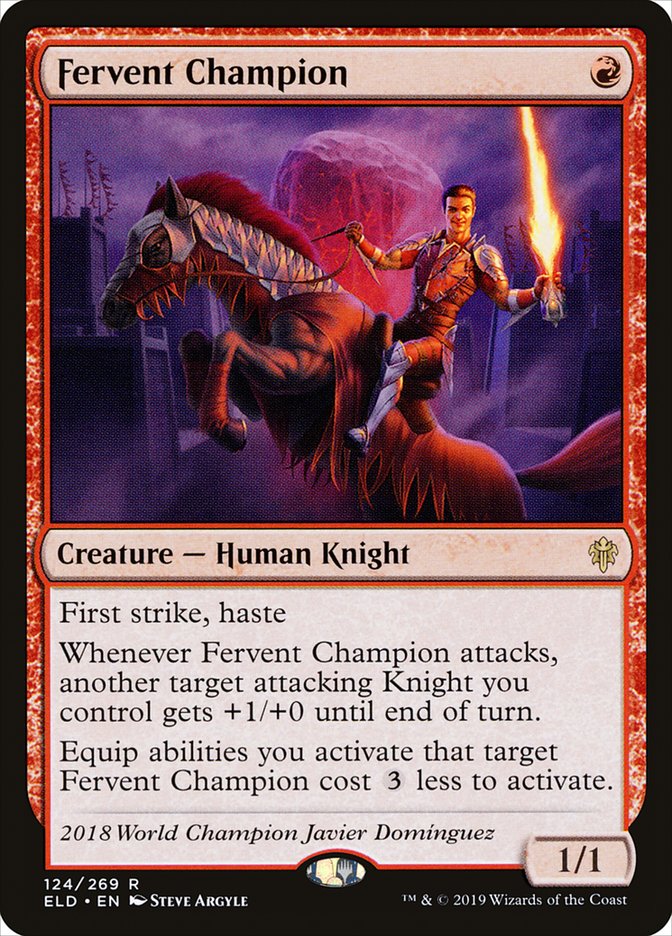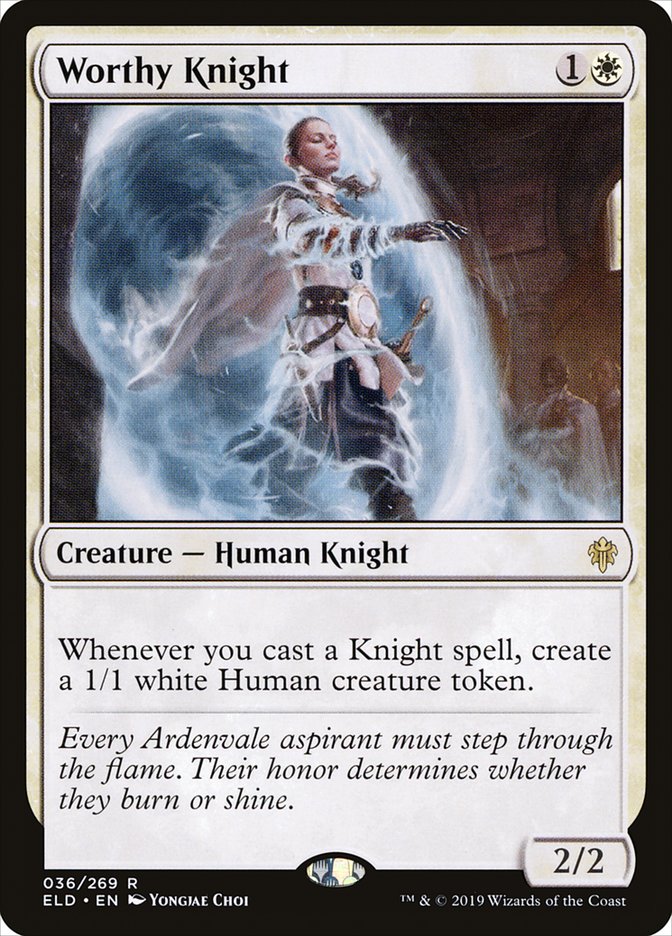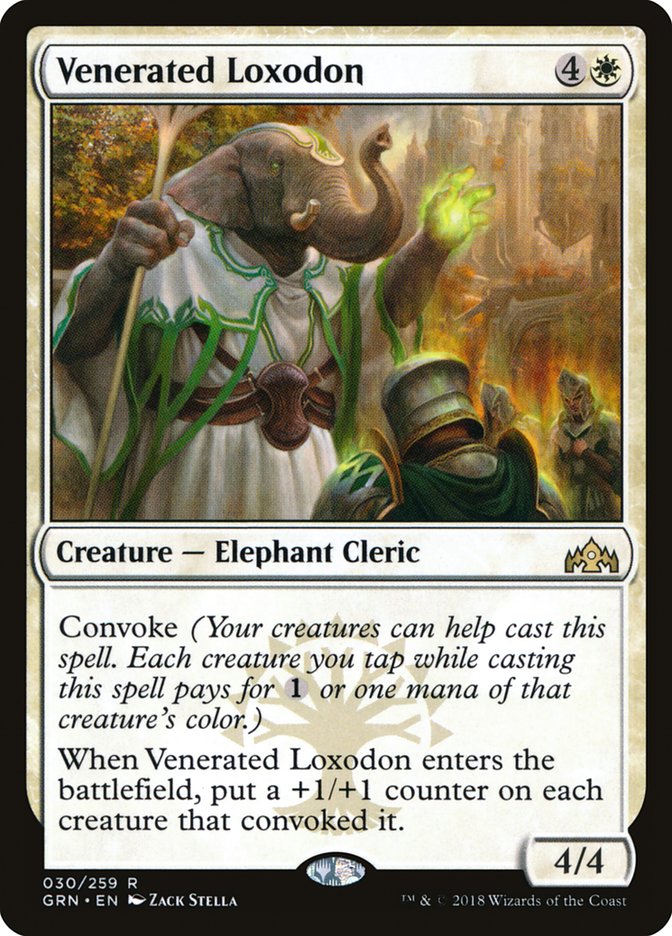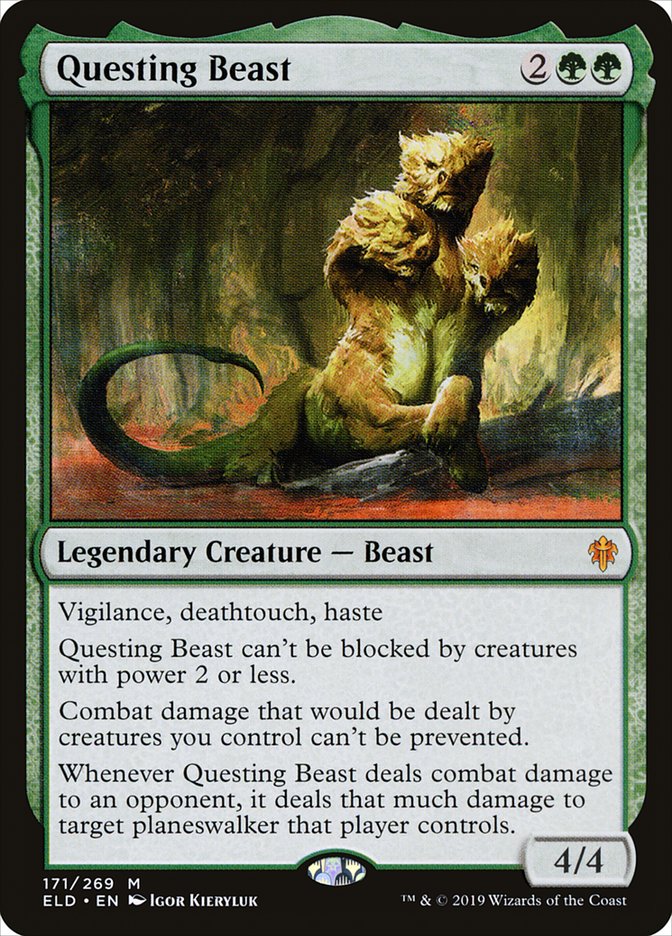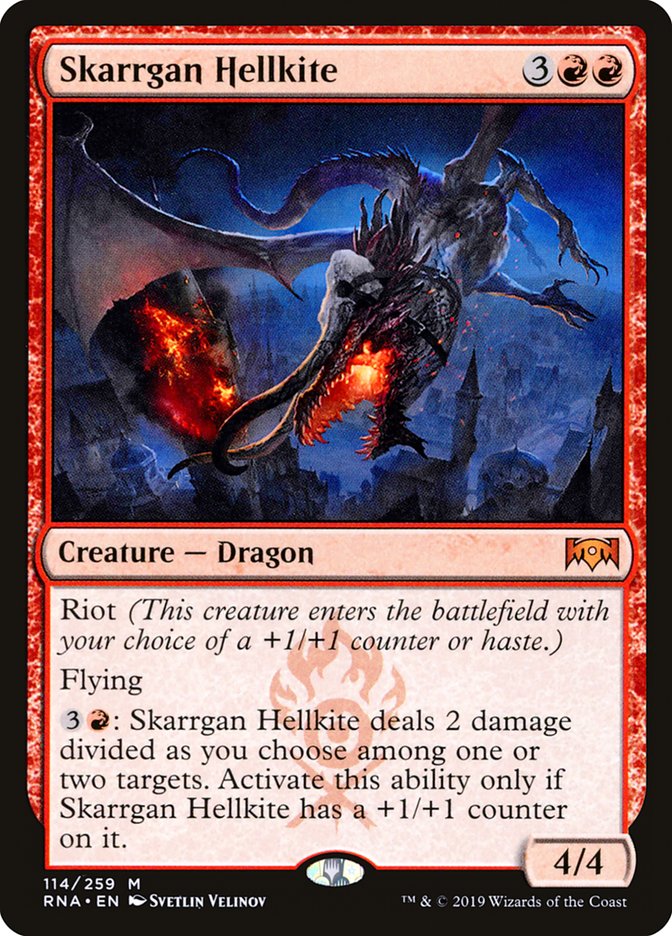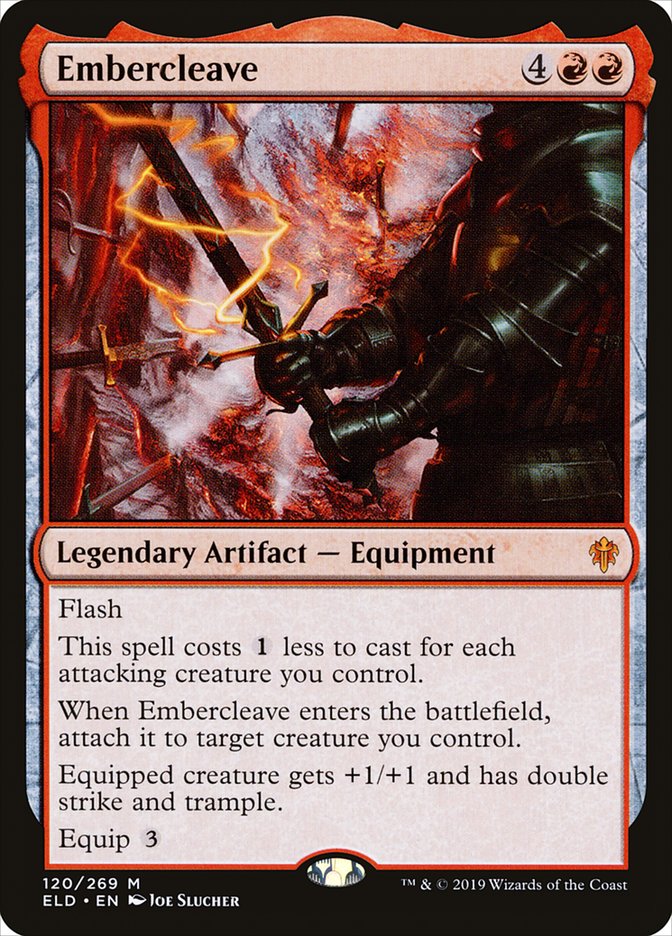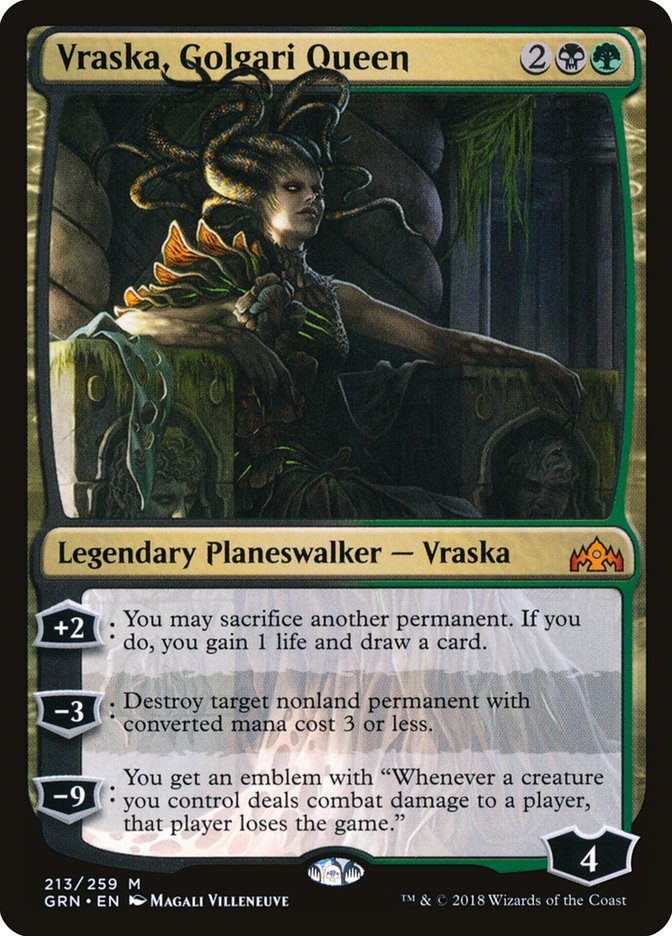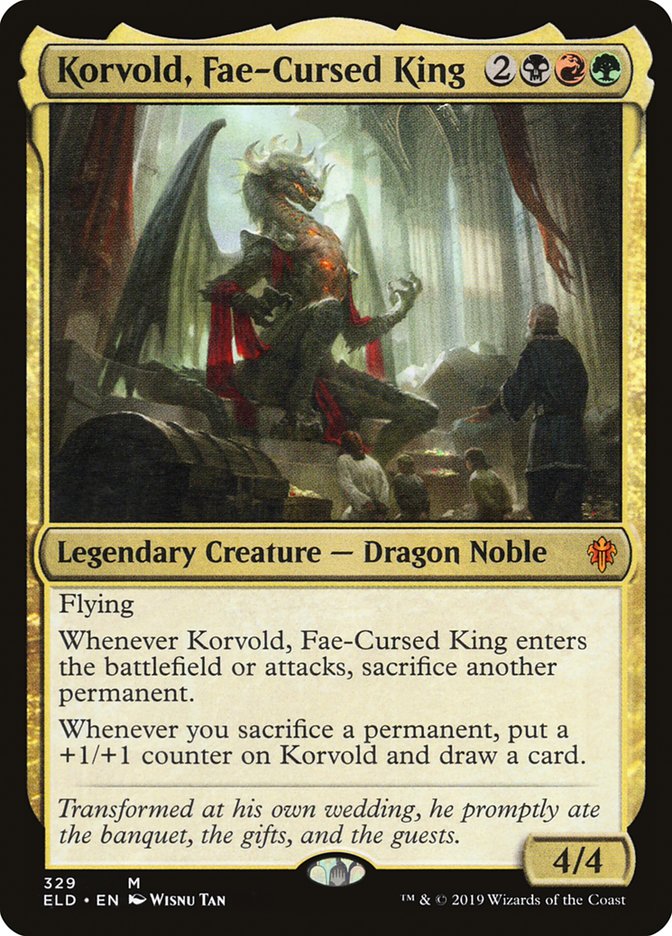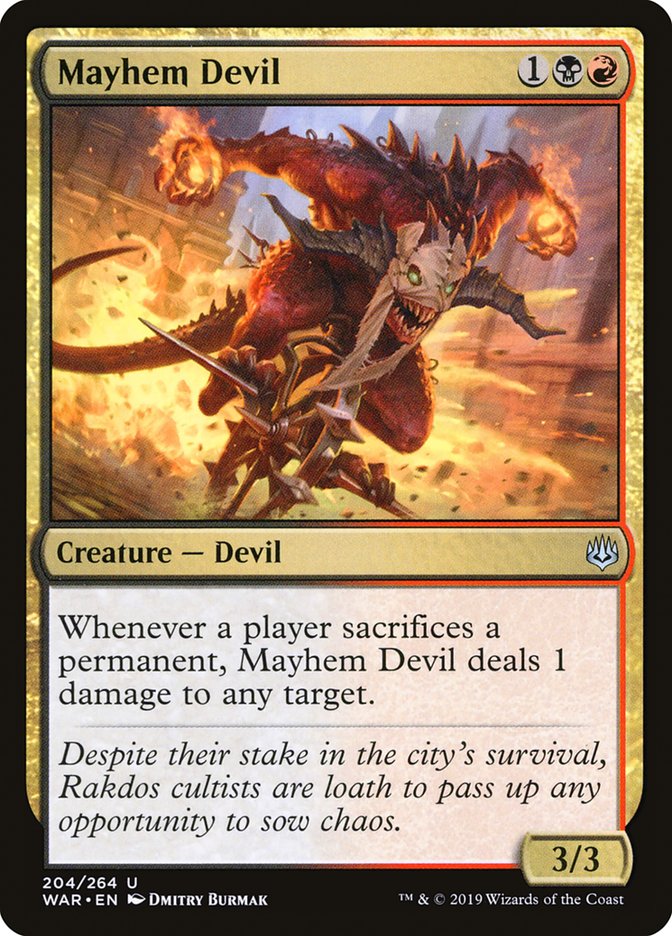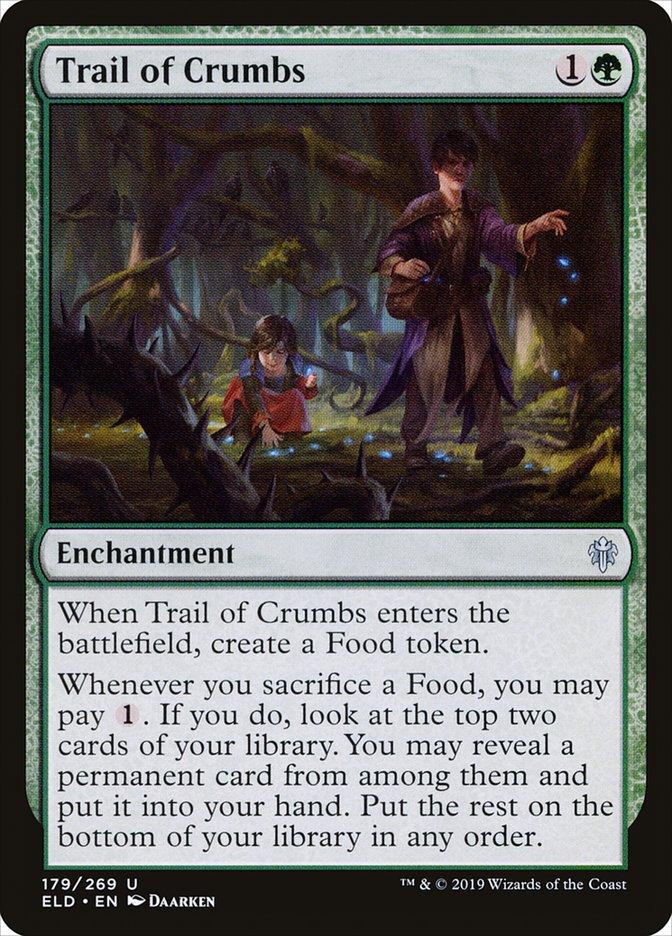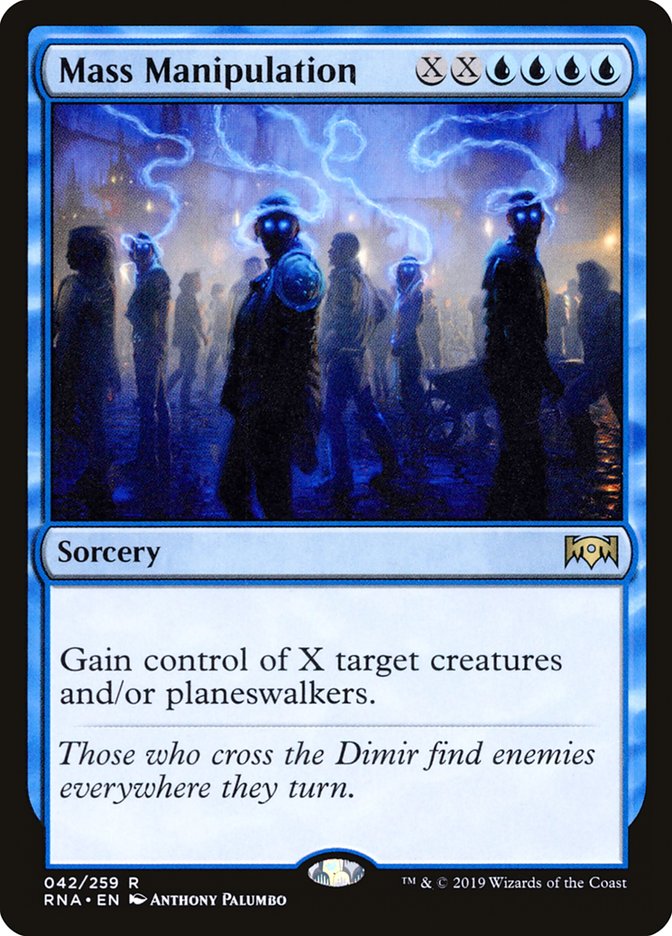Elk Elk Elk Elk Elk Elk Elk Elk Elk – Mushroom Mushroom!

If you squint hard enough, that looks like Standard strategy.
For people who may be a bit out of the loop right now, Throne of Eldraine Standard is more or less defined by a package of Food-matters cards:
When accompanied with Once Upon a Time, the deck is able to cast an Oko, Thief of Crowns on the second turn with startling consistency. With Oko’s ability to invalidate almost any creature that’s put in front of him, it’s hard to really combat this one-two punch.
This has led to the format beginning to fold in on itself while trying to win the Food mirrors. Take the current default iteration of Food, Sultai:
Creatures (18)
Planeswalkers (10)
Lands (17)
Spells (15)

Going as far as maindecking Noxious Grasp in order to tag opposing copies of Oko, Thief of Crowns and Nissa, Who Shakes the World, black’s stock has risen over the last few weeks in Standard. That doesn’t even get into the fact that Oko Elk’ing things can enable copies of Noxious Revival that may otherwise be dead in nongreen, nonwhite matchups.
With the Day 2 metagame of Grand Prix Nagoya sporting over 50% Food variants, it’s easy to lose hope and feel like it’s a matter of “play Food or die.”
It isn’t.
There are plenty of ways that people are actively competing without Oko and having some level of success. All of them have their own angle of attack against the archetype and examining all of them gives a neat roadmap of the axis that Food can be attacked from.
Synergizing
Despite operating like a midrange deck, Food decks aren’t the best at interacting during the early stages of the game.
This is largely because the primary gameplan of the Food decks is to invest in some quantity of mana creatures before casting a planeswalker ahead of schedule. This doesn’t really leave much room for the interactive spells that the last few years have conditioned us to expect from midrange shells:
This gives decks an opportunity to lean into synergies that can power through a single planeswalker and put the opponent on the back foot in the process. Take a look at the Rakdos Sacrifice deck, for example:
Creatures (21)
- 4 Midnight Reaper
- 3 Gutterbones
- 4 Priest of Forgotten Gods
- 4 Mayhem Devil
- 2 Cavalier of Night
- 4 Cauldron Familiar
Planeswalkers (2)
Lands (17)
Spells (20)

This deck looks to pressure the Food deck’s planeswalkers while also building its own battlefield. Priest of Forgotten Gods, Mayhem Devil, Midnight Reaper, and Cavalier of Night all work to tax Oko’s +1, rather than dodging it. This creates a dynamic that strains the Food deck’s resources. After all, casting a pseudo-Beast Within on a 3/3 isn’t worth very much – especially if that’s all that Oko is doing.
This deck also looks to exploit the fact that Food is also a synergy deck, in some respects. That’s to say that it’s also a deck full of enablers:
……and payoff cards:
It’s not an accident that the aforementioned Rakdos cards are all picked specifically to handle the payoffs that Food decks are presenting.
The biggest key here is having something good at controlling creatures and requiring multiple pieces of interaction to pick apart. Even if green is the most powerful color in Standard right now, it’s still green, which means it’s limited to creatures and planeswalkers to generate on-battlefield advantages. Dominating combat is just the two-step process of beating the opponent’s creatures and pressing that advantage for the sake of checking opposing planeswalkers.
Blanking Oko
By that same token, another way to fight the fight on the battlefield is to simply not engage. The most intuitive way to do this is to play something more reactive:
Creatures (6)
Planeswalkers (4)
Lands (16)
Spells (34)

Before War of the Spark, cards like Absorb and Sinister Sabotage saw a reasonable amount of Standard play. Then, Teferi, Time Raveler happened.
Food variants have mostly pushed Teferi out of the format. When Oko guarantees that it’s possible to generate a pseudo-hasted 3/3 out of nowhere, it’s difficult to justify just shoving the planeswalker into everything, like we were a few months ago.
With Teferi not being as big a player in the format, it’s safer to start playing counterspells. With a strategy that isn’t entirely dissimilar from the Rakdos approach, Azorius Control is attacking Food by operating under the assumption that the deck can be separated into enablers and payoffs.
This means saving counterspells to line up against the payoff cards in the deck and using things like Time Wipe to mop up the rest. This deck also leans into the one permanent type that Food struggles to interact with:
Having a clean answer to planeswalkers and Wicked Wolf is a big deal for this deck. There are even room for tricks with the card that lets it combo with Teferi to build Hero’s Downfall against planeswalkers that have already been exiled under Prison Realm.
Let’s say there’s an Oko trapped in the Realm, and another one on the opponent’s side of the battlefield.
The Azorius player can cast Teferi, Time Raveler, and use their -3 to pick up Prison Realm. The Food player will then have to choose an Oko to keep on the battlefield. From there, the Azorius player can re-cast Prison Realm and have the opponent Oko-less.
Similar to what the Rakdos deck is doing, this deck is basically making it so the Food deck isn’t going to be able to gain a relevant advantage on the battlefield.
Going Over the Top
In the vein of opting out of Food’s gameplan are some less-reactive decks that have mana-abusing enchantments in order to capitalize on the fact that Food doesn’t have a very good clock.
Creatures (2)
Lands (21)
Spells (37)
- 1 Forest
- 2 Mountain
- 2 Island
- 3 Opt
- 1 Sorcerous Spyglass
- 4 Chemister's Insight
- 4 Expansion
- 4 Growth Spiral
- 4 Wilderness Reclamation
- 3 Flame Sweep
- 3 Aether Gust
- 4 Mystical Dispute
- 2 Escape to the Wilds
Sideboard

In many respects, Temur Reclamation is leaning away from the plan of attacking enablers and payoffs that we’ve seen from the previous two decks, and more into the fact that Food doesn’t have a great clock. Instead, Temur Reclamation is planning on Food decks not having a way to combat the namesake enchantment of the deck:
This leads to Temur Reclamation simply sitting back and using its life total as a resource, all while using Chemister’s Insight and Escape to the Wilds to turbo through their library for endless copies of Expansion and Wilderness Reclamation.
Creatures (14)
- 4 Cavalier of Flame
- 4 Cavalier of Gales
- 1 Kenrith, the Returned King
- 3 Bonecrusher Giant
- 2 Fae of Wishes
Planeswalkers (4)
Lands (23)
Spells (19)

On the topic of game-breaking enchantments that win via mana advantages, we have Fires of Invention, coupled with the endless advantage afforded by the enters-the-battlefield Cavalier of Gales and Cavalier of Flame, Fae of Wishes, and Kenrith, the Returned King.
The deck isn’t doing anything that quite has the same “I win” button as an Explosion with an X value equal to its opponent’s life total but is doing more powerful things than the Food deck. Think of it this way: the Food deck is planning to simply cast the most mana-efficient threats in the format. Jeskai Fires is literally casting two cards a turn, accepting that even if they aren’t the most powerful things on that spot in the curve, they’re going to add up to being more powerful than the one spell the opponent is casting.
Going Under
We’ve arrived at the inevitable answer to every single best deck in the history of Standard: sinking all your points into reducing life points.
Creatures (35)
- 4 Spawn of Mayhem
- 4 Gutterbones
- 4 Dreadhorde Butcher
- 4 Rotting Regisaur
- 4 Knight of the Ebon Legion
- 3 Rankle, Master of Pranks
- 4 Murderous Rider
- 4 Robber of the Rich
- 4 Bonecrusher Giant
Lands (15)
Spells (10)
Sideboard

Playing a pile of resilient and modal threats is an easy way to sneak out game wins against unsuspecting players, that may be mulliganing based under the assumption that they’re about to be playing against a midrange deck, or some four-drop enchantment. You know, something that gives a bit of breathing room.
Some decks aren’t even trying to be resilient:
Creatures (35)
- 4 Venerated Loxodon
- 4 Inspiring Veteran
- 4 Venerable Knight
- 4 Weaselback Redcap
- 4 Worthy Knight
- 4 Fervent Champion
- 3 Bonecrusher Giant
- 4 Acclaimed Contender
- 4 Rimrock Knight
Lands (9)
Spells (16)
Sideboard

Creatures (28)
- 2 Kraul Harpooner
- 4 Pelt Collector
- 4 Gruul Spellbreaker
- 3 Skarrgan Hellkite
- 4 Zhur-Taa Goblin
- 3 Paradise Druid
- 4 Questing Beast
- 4 Bonecrusher Giant
Lands (4)
Spells (28)

You know what’s good at punching through a clogged battlefield?
Having more creatures than your opponent.
Or simply brute-forcing through a pile of small-to-medium knuckleheads.
The plans to beating things aren’t always attractive, but the scoreboard doesn’t really care how pretty victory is, so long as it comes.
Adapting the Menace
While we’re talking about doing things that aren’t pretty, there’s the final tactic to beating up on Food – being the better Food deck. Rather than being a specific angle of attack, this is about the other cards that are played alongside the basic Food shell.
The most popular way to do it right now is the Sultai take on the deck. We’ve already talked a bit about Noxious Grasp but Vraska’s ability to tag Oko and leave behind a resource is a nice draw to the variant.
Creatures (20)
- 2 Paradise Druid
- 4 Mayhem Devil
- 4 Gilded Goose
- 2 Korvold, Fae-Cursed King
- 2 Murderous Rider
- 4 Wicked Wolf
- 2 Cauldron Familiar
Planeswalkers (5)
Lands (20)
Spells (15)
Sideboard

At a glance, this deck looks like a mixture of the Rakdos Sacrifice deck and a Food shell. If you look harder, it still looks that way.
Rather than using Hydroid Krasis for bursts of cards, this deck is leaning into the idea that the battlefield is going to get clogged, and expects to use Korvold, Fae-Cursed King; Mayhem Devil; and Trail of Crumbs to snowball an advantage while both players stare at each other. Korvold, in particular, may seem unassuming at first, yet frequently will draw upwards of seven cards if his controller gets to untap with him.
The final angle of attack that’s gaining ground is simply having an enormous mana sink a la Mass Manipulation to clown Food players that dare to put creatures and planeswalkers on the battlefield. It’s a bit hairier in sideboard situations because of Veil of Summer, but pre-sideboard, the card is frequently lights out if it’s for an X value of two or more.
All of this is to say that small-ball, middle-of-the-road options like Questing Beast are frequently not going to cut it against Wicked Wolf and Oko. Winning Food mirrors requires specific cards in order to go over the top of what they are doing or fundamental strategic shifts that sidestep the battles that Food decks keep winning.
The format is developed enough that we’re past the point of hoping to dodge Food decks. Have a plan or expect to be quickly dropping from your next Standard event.


